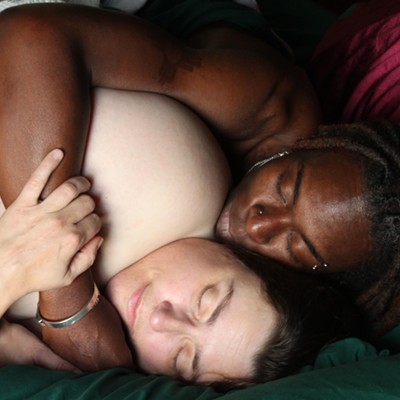I'm standing with Duane Rieder, the local keeper of Roberto Clemente's flame, in the spot where Lou Gehrig once slept.
We're in the old Pittsburgh Engine House No. 25, at 3339 Penn Ave., in Lawrenceville. Rieder, a professional photographer, uses this building as his studio, and he's now converted it into the Roberto Clemente Museum (with the blessing of Clemente's widow, Vera). But the building had ties to baseball history long before Rieder bought it. The Oct. 5, 1927, Pittsburgh Post-Gazette reported that while Gehrig was in town for the World Series, the Iron Horse sneaked off to Engine House No. 25 "while the rest of the Yankees hobnob[bed] with the rich of Pittsburgh." It's fitting that the building itself bridges two players who were so great and whose deaths were so tragic. (Clemente died in a plane crash while trying to help earthquake victims; Gehrig, of course, died from the nervous-system disease that bears his name today.)
Rieder has two things on his mind these days: whether a Clemente museum could sustain Rieder full time; and his mission to determine the exact location of the bat Roberto used when he hit number 3,000, his last major-league hit.
The project began with photos Rieder did for a calendar for the 1994 All-Star Game, held at Three Rivers Stadium. Rieder visited Vera Clemente in Puerto Rico. "I spent the day with Vera and she pulled things out of secret little hiding spots," he recalls. "I got to see all kinds of stuff."
Three years later, Rieder discovered more photographs, including a 1968 series by Neil Liefer (who took the famous shot of Muhammed Ali towering over Sonny Liston after delivering the knockout shot). Liefer had spent a whole day with Clemente, taking pictures of his daily routine, and Rieder found the photos ... sitting in a puddle in the basement.
"I thought, 'They're going to get ruined.' So I told them, 'I'm taking everything in the house back to Pittsburgh.'" Rieder salvaged around 250 prints, and has spent the last 10 years digitizing them, scanning them and making new prints. The photos of that day are now displayed in the firehouse.
His favorite is a shot of Clemente in uniform down on one knee taking a picture of Willie Stargell's daughter and youngest son. The shot was taken by Pirates photographer Les Banos, who visits with Rieder about once a week, and whose name makes Rieder light up. "Roberto with a camera," he says.
The building features two stories' worth of memorabilia, like the 1961 Silver Bat Roberto received as batting champ, and which actually is a silver bat. You can find the bats of the 1971 line-up -- Stargell, Manny Sanguillen, et al. -- as well as Roberto's uniforms, bats and a plethora of autographed photos.
But some of my favorite things are the smaller items, like a few of Clemente's work/union cards. Downstairs is an unsigned contract accompanied by a letter from Clemente to Branch Rickey, asking for more money. "At this point, Rickey's been in baseball for 50 years and he's this big, burly, cigar-smoking pompous son of a gun, and 19-year-old Roberto is playing hardball with him," Rieder says, laughing.
As for the legendary bat used in Clemente's 3,000th hit, three or four people claim to have it, including the folks in Cooperstown. "The Hall of Fame definitely doesn't have it," scoffs Rieder. "If you look at every photo, the bat is definitely used and dark and has this dark band. ... The one the Hall of Fame has is very new and clean-looking." Les Banos thinks Roberto gave it to his son; one of Roberto's friends who lives in Washington, D.C., says that she has it.
"I'm trying to get to the bottom of it with the encouragement of the Hall of Fame" and a lot of research, Rieder says.
As to the museum itself, Rieder is at a crossroads. Either it will sustain itself financially, or he will return the building to a full-time photography studio and keep a few choice items for himself. Pointing out pair of cleats perched atop a home plate, he says, "This is my favorite thing: Roberto's cleats on the 1971 World Series home plate. I would never sell these."
Those who knew Roberto describe him as proud, and able to build a larger family from strangers. Thanks to the museum, he is still doing just that.
Visits to the museum are by appointment only. Call 412-621-1268 or e-mail [email protected]m










